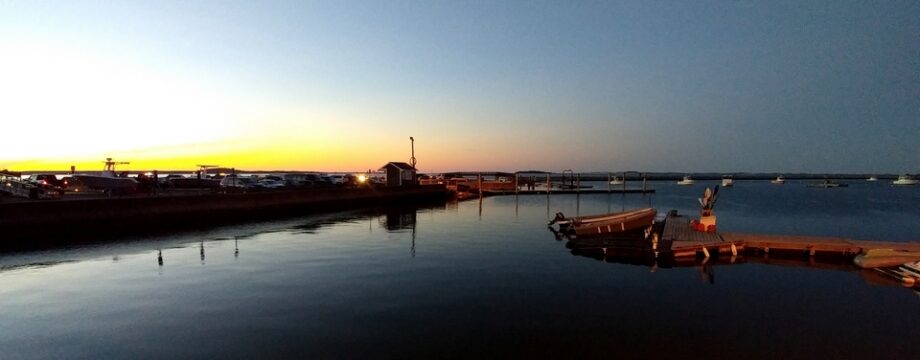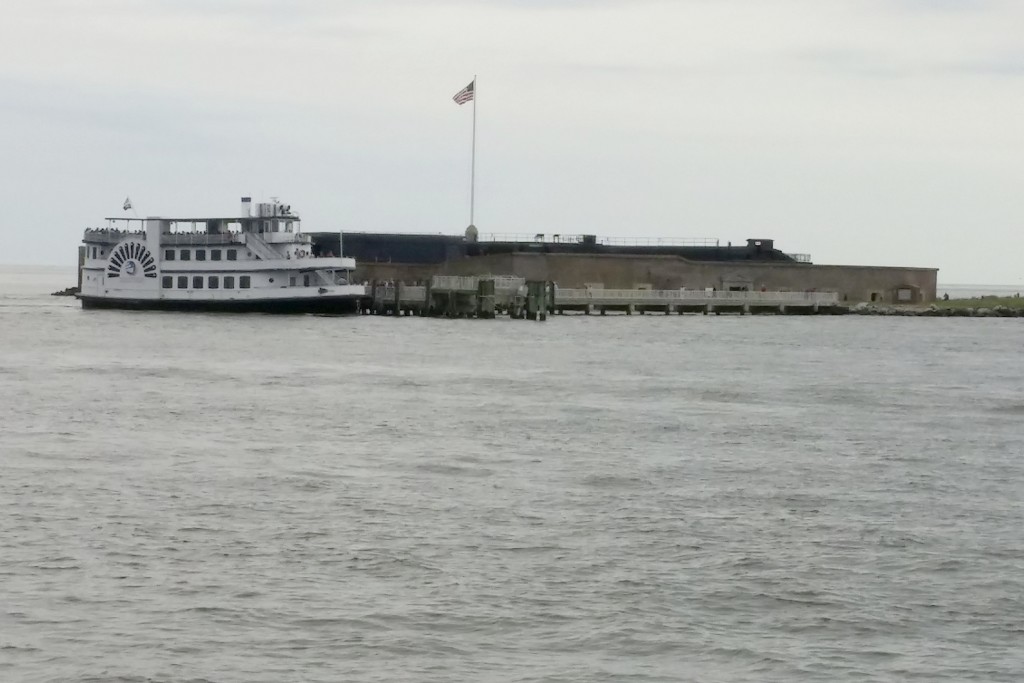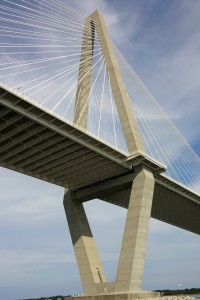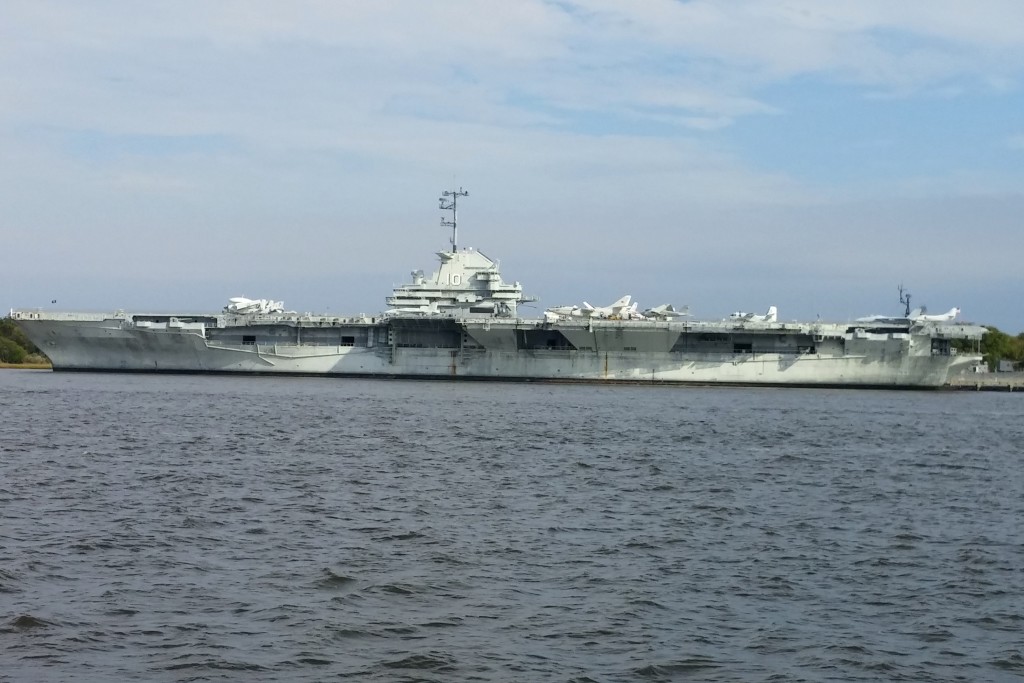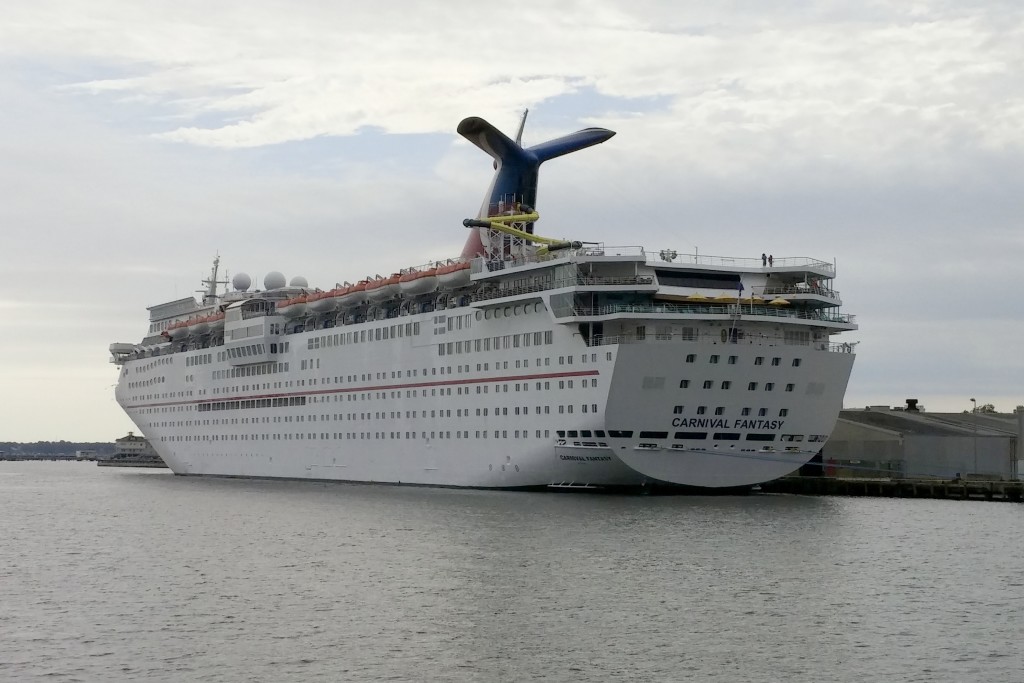During our five days in Charleston we took two sightseeing tours – a combination bus tour of the city, a boat tour of the harbor and a walking tour of a historic mansion, and a “black history” bus tour that focused on the parts of the city that figured prominently in the slave trade and other major incidents in black history. This post is only about the harbor tour. Another post (or two) of the land tours will follow.
The harbor tour was a narrated 90-minute circuit of the harbor. The highlights were (1) Fort Sumter, (2) Fort Moultrie, (3) Patriots Point and (4) the striking Arthur J Ravenel Jr bridge. The bridge is beautiful and looks like the big brother of the Zakim bridge in Boston. It is an impressive entrance to the city, but is even more impressive from below.
Patriot’s Point is a tourist destination that includes hotels and various attractions, the most obvious of which is the USS Yorktown, a WWII aircraft carrier. It is now a floating museum which includes, on deck, numerous aircraft, most of which have nothing to do with naval warfare. We didn’t tour the Yorktown, but it is an impressive sight from the harbor.
To balance the Yorktown, the opposite (Charleston) side of the harbor has a passenger cruise terminal. The cruise ship in dock that day – the Carnival Fantasy – is as imposing as the Yorktown. In fact, it is both longer and has a much larger displacement than the Yorktown. Obviously, shipbuilding technology has come a long way in 60 years.
Fort Moutrie – which was difficult to see from the harbor – is more interesting for its role in the Revolutionary War (it kept the British out of Charleston) than in the Civil War (it was a fort abandoned by the federal troops before the shelling of Fort Sumter began, then was one of three place from which the shelling originated. It is interesting because it was, in the Revolutionary War, made of dirt and palmetto logs. This simple construction proved to be impervious to the British shelling and forced the British to attempt a landing behind the fort, which was also repelled. This was, arguably, the first American victory of the Revolutionary War.
The “highlight” of the tour, if you can call it that, was Fort Sumter which has an iconic place in American history as it was the site of the first shot of the Civil War. We could have taken a tour of the fort, but I assumed – correctly – that the structure there now bears almost no resemblance to the fort that was on the site in 1861. Three months of bombardment tends to destroy stone structures. Still, it was interesting to see the site and to get a feel for the geography (which has not changed).
It was a worthwhile investment of 90 minutes of our time. But not a “must do” if you go to Charleston.

